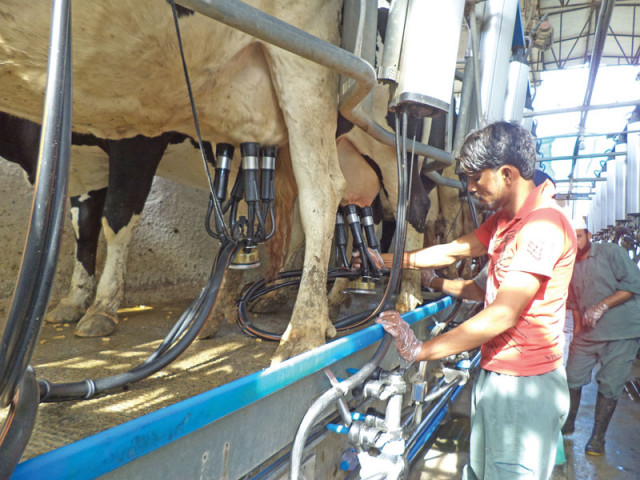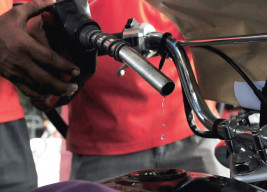
The unhygienic environment that loose or unprocessed milk is exposed to is no secret to the Pakistani consumer.
Loose milk has a market share of over 90% but there is no way to check its quality. One cannot be sure because the informal sector does not conduct any quality control tests.
What is even more interesting is the fact that, despite its substandard supply chain, the informal milk still remains the first choice for a vast majority. Most consumers think that bacteria and harmful substances present in loose milk are killed once it is boiled.
Secondly, there is a lot of uncertainty – among consumers – about the processing and quality of branded or formal milk which is the only alternative.

The formal milk sector – Nestle Pakistan, Engro Foods, Haleeb Foods and Anhaar to name a few players – refers mainly to the following: milk processed through Ultra-High Temperature (UHT), powdered milk and pasteurised milk.
This report, however, is an exclusive attempt to focus on the supply chain of UHT milk, the largest segment of fresh milk in the formal sector. To witness the UHT milk supply chain, dairy, traditional and corporate farms were visited. Work at milk collection centres at the village level; a main collection centre at the district level and a milk processing plant was also observed.
The process starts early morning. Small farmers, the largest producers in the country, do the milking at their farms (homes in many cases) by hand and immediately bring the raw milk at the collection centre of their village – Said Pur in this case.
A collection agent takes the sample from each farmer and conducts basic quality tests to check if the milk is acceptable. If cleared, it is poured into a chiller – hygienically cleaned beforehand – and stored below 6˚C.
This is the collection method for small farmers.
The corporate farm was run in line with international best practices. At these farms, the milking was done mechanically, from the animal’s udders to the finished product the raw milk remains unexposed to the environment – courtesy the suction pumps directly connected to the chillers.
Once stored, the raw milk is not exposed to the environment at any stage of the supply chain.
These chillers then piped the milk into tankers that are also equipped with chillers. The milk is brought to the district’s main centre. A sample is taken and more rigorous quality tests are performed – this time in state-of-the-art scientific labs. The main centre visited was located in Kangan Pur (Kasur District) and owned by Nestle.
After quality clearance, the tankers leave for the company’s processing plant – the Sheikhupura processing factory visited was owned by Nestle.
Every tanker arriving at the factory is first cleaned to prevent any dust particles, germs or bacteria it might have carried along from entering the premises. A sample is taken once again at the factory’s main collection point.
They conduct quality tests at every step of the supply chain to make sure the raw milk didn’t spoil since the last station. Though equipped with chillers, many tankers have to cover long distances to reach the factory, which could spoil the milk – a few months ago the company had drained 125 liters of raw milk spoiled on the way due to a massive traffic jam, an official said during the demonstration process.
If the quality is acceptable, the milk is offloaded directly into the factory’s chillers where processing starts. At the factory, several quality tests are performed by the company’s scientists and technicians.
The UHT processing
While being processed, the raw milk flows through heat exchangers consisting of metal plates or tubes and there is no direct contact between the food and the heating medium steam. During the first step, the milk is pasteurised, which kills pathogens, the disease causing bacteria. They then perform de-aeration to ensure no air bubbles are left in the milk.
The raw milk is now processed for UHT treatment – it is heated at 135˚C or higher for about four seconds. The next step is fat balancing or homogenisation that brings fat particles of milk body to the same level — 3.5% fats.
After being processed, the product is called standardised milk – that is every drop of milk contains the same level of fat. All of this happens at such a high speed that the entire cycle, from the farmer to the finished product, is completed in less than a day.
This standardised milk is then filled in aseptic packaging – of Tetra Pak – through automatic plants and sealed in the form of containers found in grocery stores.
Published in The Express Tribune, April 28th, 2014.
Like Business on Facebook, follow @TribuneBiz on Twitter to stay informed and join in the conversation.


















COMMENTS
Comments are moderated and generally will be posted if they are on-topic and not abusive.
For more information, please see our Comments FAQ